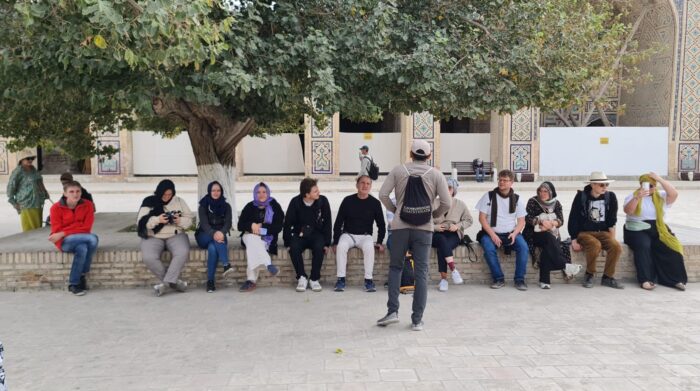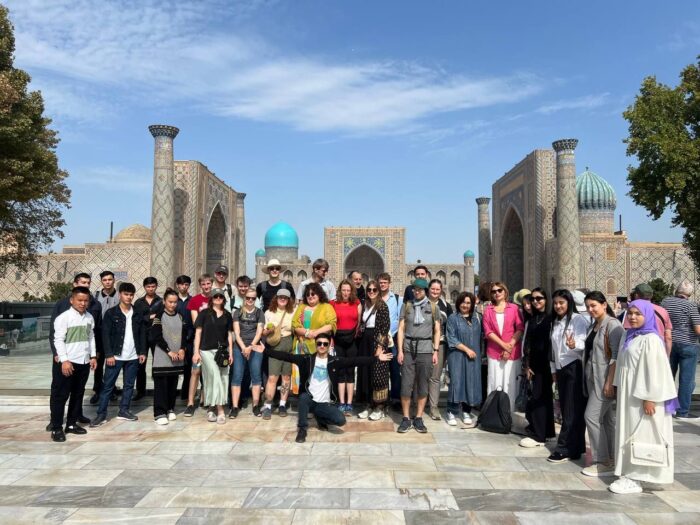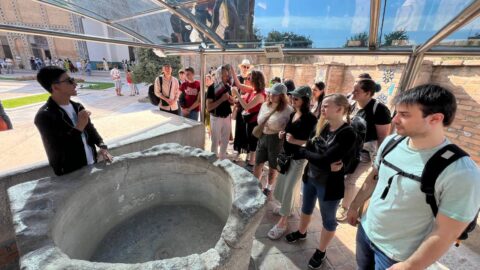Exploring Bukhara and Samarkand
Our delegation of students and staff from the Chair of Modern and Eastern European History at FAU had the opportunity to explore two of Uzbekistan’s most historically rich cities—Bukhara and Samarkand. These visits combined both cultural exploration and academic discovery, offering a comprehensive experience of the country’s past and present.
In Bukhara, we immersed ourselves in a guided walking tour of the Old City. We visited the Lyabi-Khauz Ensemble, the bustling trading domes, and architectural treasures such as the Kalyan Minaret, Miri-Arab Madrasah, and Ark Fortress. Our exploration also included learning about the history of Bukharan Jews and understanding the city’s developments through the 20th century.

We approached Samarkand, from two angles: On the one hand, we collaborated with local historians to visit the colonial and Russian parts of the city. On the next day, we visited the ancient parts of the city that were shaped by Islam, including the world-famous Registan Square and the Gur-e-Amir Mausoleum. Additionally, we engaged with the city’s 20th-century historical sites, allowing us to connect the ancient past with more recent history.

In Samarkand we met with our project partner, Dr. Iroda Shamsieva, and her students from Kimyo University. This inspiring cultural exchange fostered dialogue on shared academic interests.
Our visits to Bukhara and Samarkand were more than just sightseeing; they provided a deeper understanding of Uzbekistan’s cultural heritage, everyday life, and historical transformations across centuries.

